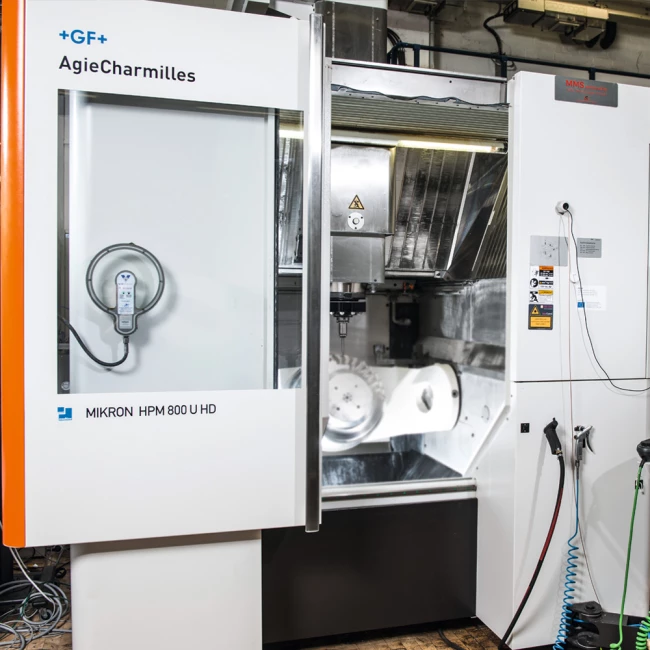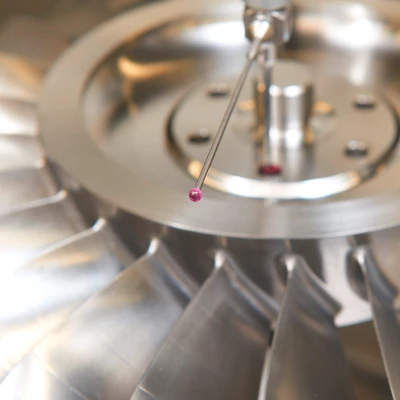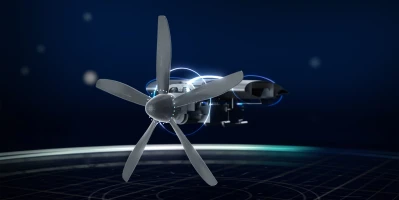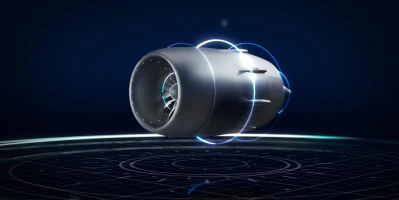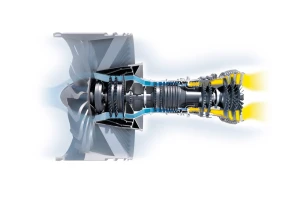innovation
MTU and Fraunhofer IPT establish blisk prototyping facility
As the ramp-up of the current PW1000G engine generation continues, MTU has already started developing blisk prototypes for the next GTF generation at a dedicated blisk prototyping facility.
02.2018 | author: Thorsten Rienth | 3 mins reading time
author:
Thorsten Rienth
schreibt als freier Journalist für den AEROREPORT. Seine technikjournalistischen Schwerpunkte liegen neben der Luft- und Raumfahrtbranche im Bahnverkehr und dem Transportwesen.

Dr. Sascha Gierlings lifts a blisk out of the machine, but it looks different to what you might expect. The prototype still has a silvery shine to it, just like a piece of jewelry, but its blades look slimmer than conventional blisks. It's supposed to look this way. "This is precisely where the trend for blisks in the next generation of GTF engines is heading."
By about 2030, these blisks could help power the aircraft that will eventually succeed the Airbus A320neo and the C Series. As before, this new blisk design is the brainchild of MTU engineers. At the Fraunhofer Institute for Production Technology IPT in Aachen, Gierlings has been busy addressing the question of how best to produce the new blisks.
"Advanced compressor architecture calls for new blade designs, something we have already been able to depict using computer models," explains developer Dr. Bertram Kopperger. Kopperger, who heads up the production technology program at MTU Aero Engines in Munich, was the one who commissioned "Technikum Blisk", the dedicated blisk prototyping facility at Fraunhofer IPT. "To demonstrate the potential of design optimizations in practice, we have to set up a rig and then run a great number of tests on the prototypes."
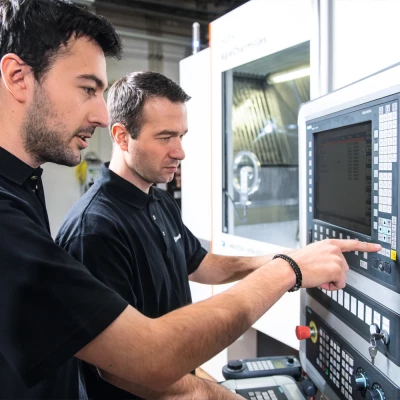

Kilian Fricke (left) and Willi Tontsch from Fraunhofer IPT program the five-axis milling machine used to process the blisks.

Kilian Fricke (left) and Willi Tontsch from Fraunhofer IPT program the five-axis milling machine used to process the blisks.
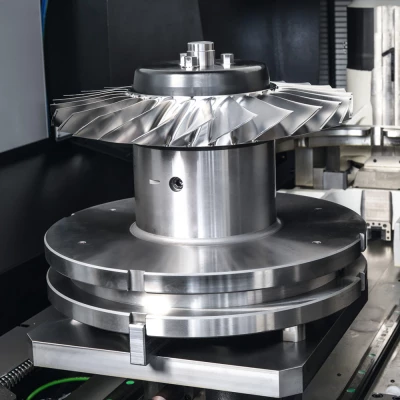

A production blisk for the PW1100G-JM, which entered regular service in 2017. The blisk prototypes to be produced in Aachen from now on could become production parts for next-generation aircraft engines.
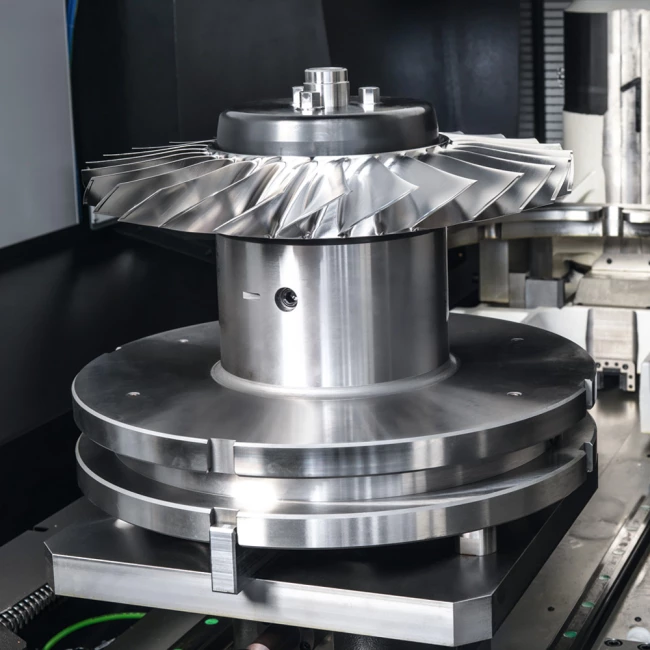
A production blisk for the PW1100G-JM, which entered regular service in 2017. The blisk prototypes to be produced in Aachen from now on could become production parts for next-generation aircraft engines.
Producing the prototypes is a long and costly process. "Their design is entirely customized, each blisk is a separate entity," Kopperger explains. "We have, in fact, vastly expanded our blisk production capacity in Munich." But the whole shop is geared towards automated processes and disruptions have to be avoided wherever possible. Adding new prototypes to the workload would cause complications in blisk production for the current PW1000G engine family. For this reason, MTU plans to shift more of the blisk prototype production to Fraunhofer IPT in Aachen in the future, which is precisely the thinking behind the prototyping facility collaboration. This move will help ease workloads at the production line in Munich.
Applied research in the truest sense
Higher levels of engine sophistication require increasingly complex production processes. "For us, the prototypes represent applied research in its truest sense," says Dr. Thomas Bergs, Managing Director of Fraunhofer IPT, outlining the institute's motivation. "It's vital for us to verify our theoretical models in a real-life environment."
Slimmer blades are less stiff, which means they vibrate more. However, the tools used in production can inadvertently cause vibrations that can potentially have a negative impact on quality. What poses a real challenge is finding a solution to control these vibrations. In simple terms, the approach that Gierlings and his team are currently investigating is as follows: Using the tool and position data in conjunction with an analysis of the vibrations, the researches can predict the impact of the tools on the entire component surface. Then, they use the control software to adjust the process parameters, reducing the vibrations or even stopping them completely. "We do this by precisely controlling the speed of the milling tool in critical areas," says Gierlings.
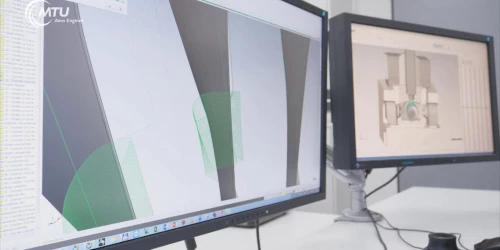

Technikum Blisk
While MTU is responsible for designing the new blisks, the Fraunhofer Institute for Production Technology IPT in Aachen addresses the question of how best to produce them. To the video
One year, four blisk prototypes
MTU has been working in close collaboration with Fraunhofer IPT at the center of competence for compressor and manufacturing technology for ten years now. Needless to say that Bergs, Gierlings and Kopperger have come to know each other pretty well. Their activities focus on the material, processes and machines used to produce highly engineered components for aircraft engines. "Back at the start, our first strategic step was to acquire identical machines to the ones at MTU in Munich," explains Managing Director Bergs. This foresight is paying off.
These very machines have now produced the first blisk prototype-the one held by Gierlings. The blisk is now on its way to Technische Universität Darmstadt, where it will be set up in a test rig. "But this is only the beginning," says Bergs. On average, the prototyping facility plans to deliver about four blisk prototypes a year to MTU.








